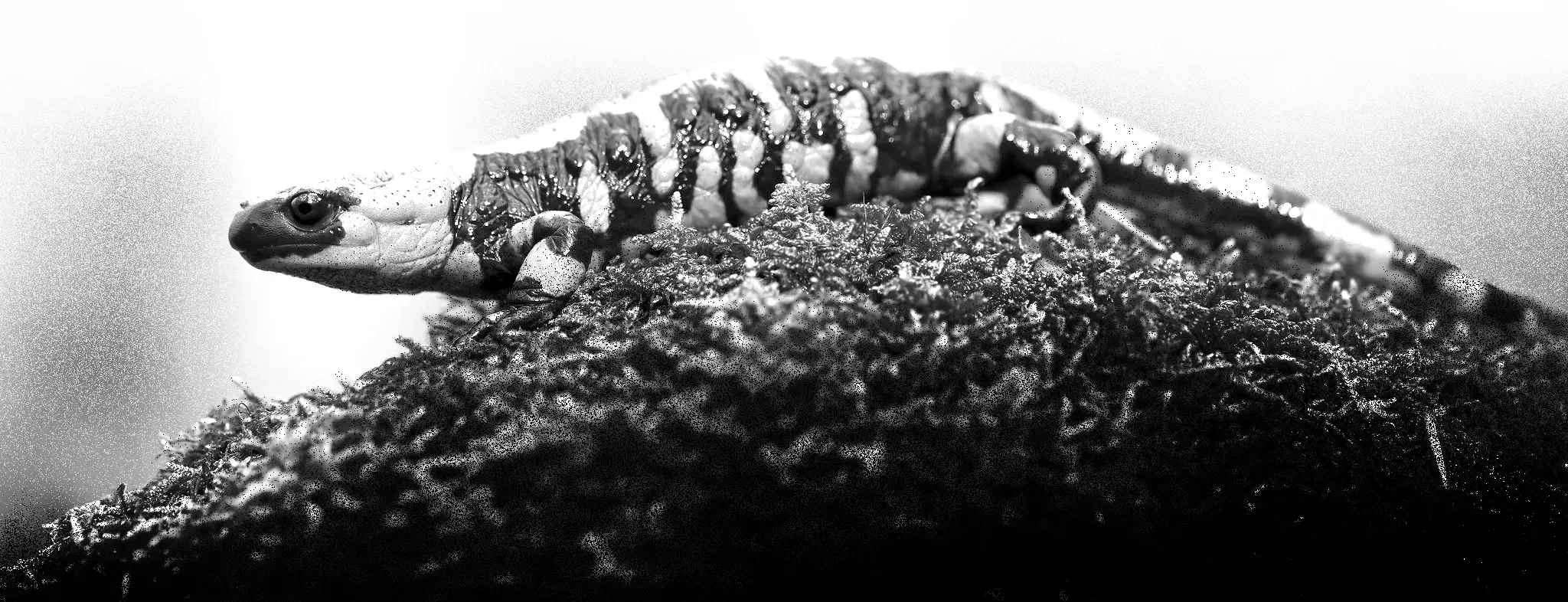
(Dermophiidae)
Neotropical Caecilians
Товстошкірі черв'яги
The Dermophiidae are a family of neotropical caecilians. They are found in Central and South America, and Africa. Like other caecilians, they superficially resemble worms or snakes.
These are generally robust, terrestrial caecilians, and like the others of their order, are legless, tailless with visible annuli. Some species, like those in Schistometopum, are completely eyeless; others have bony coverings over their eye, which are not visible exernally. Species vary in color from gray, bluish or purplish gray to bright yellow. They are the only viviparous caecilians (species that give birth to live young) with secondary annuli (rings around the body).
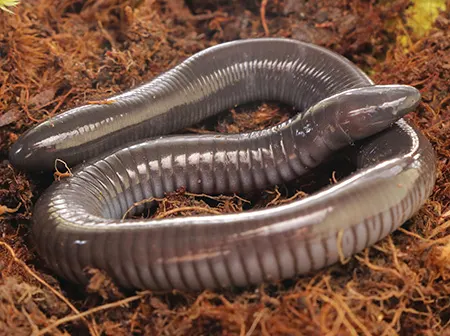
(Dermophis mexicanus)
Mexican Caecilian
Черв'яга мексиканська
It is found in Mexico, Guatemala, El Salvador, Honduras, Nicaragua, and possibly Belize, mostly on the Atlantic side, but also in some isolated parts of the Pacific slope. Its natural habitats are subtropical or tropical dry forests, moist lowland forests, moist montane forests, plantations, rural gardens, and heavily degraded former forests, at elevations up to 1,200 m.

(Dermophis costaricense)
Atlantic Montane Caecilian
Черв'яга коста-риканська
It is endemic to Costa Rica and is found on the Atlantic versant of Cordillera de Tilarán, Cordillera Central, and Cordillera de Talamanca. It occurs in premontane rainforests at elevations of 1,000–1,300 m

(Dermophis glandulosus)
Glandular Caecilian
It is found in northwestern Colombia (Córdoba and Antioquia Departments), Costa Rica, and Panama. It occurs in humid montane and lowland forests.

(Dermophis gracilior)
Southern Caecilian
Черв'яга південна
It is found on the Pacific slopes of Cordillera de Talamanca in eastern Costa Rica and western Panama, as well as in the central Pacific Costa Rica. It occurs in humid lowland, premontane, and montane forests at elevations 404–2,000 m.

(Dermophis oaxacae)
Oaxacan Caecilian
Черв'яга оахакська
It is endemic to south-western Mexico and occurs on the Pacific slopes and the Balsas depression in the states of Jalisco, Michoacán, Guerrero, Oaxaca, and Chiapas. It occurs in semi-deciduous tropical forests at elevations up to 2,100 m.
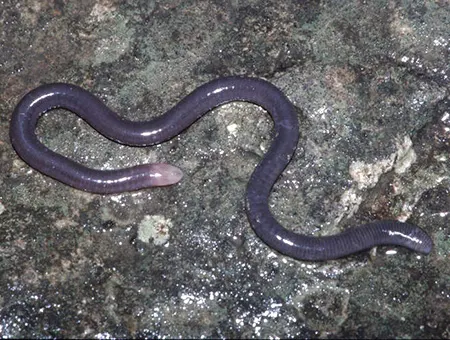
(Dermophis occidentalis)
Western Caecilian
Черв'яга західна
It is endemic to south-western Costa Rica and occurs in the Pacific lowlands and premontane slopes, extending to the western part of the central valley. It occurs in lowland and submontane rainforests at elevations of 365–970 m.

(Dermophis parviceps)
Slender Caecilian
Черв'яга тоненька
It is found in Costa Rica and Panama. It inhabits humid montane and lowland forest at elevations of 40–1,200 m.
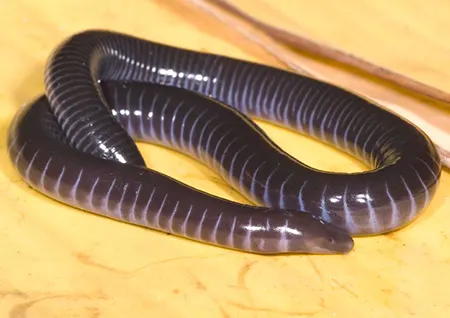
(Geotrypetes seraphini)
Gaboon Caecilian
Черв'яга габонська
It is is native to eastern Sierra Leone, Guinea, Liberia, Cameroon, Gabon, and western Democratic Republic of Congo. Its natural habitats are subtropical or tropical moist lowland forests, plantations, rural gardens, urban areas, heavily degraded former forests, and seasonally flooded agricultural land.
The genus (Geotrypetes) also includes: Angel’s Caecilian (Geotrypetes angeli), False Angel’s Caecilian (Geotrypetes pseudoangeli).
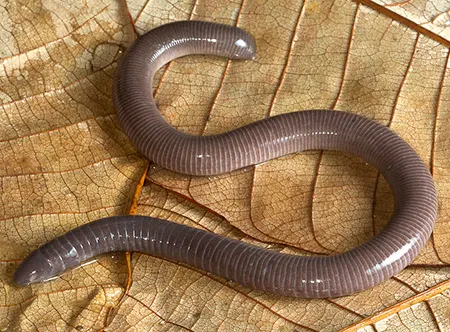
(Gymnopis multiplicata)
Varagua Caecilian
Черв'яга фіолетова
It is found in Costa Rica, Honduras, Nicaragua, Panama, and possibly Guatemala. Its natural habitats are subtropical or tropical dry forests, subtropical or tropical moist lowland forests, subtropical or tropical moist montane forests, pastureland, plantations, rural gardens, and urban areas, at elevations of 900–1,400 m.

(Gymnopis syntrema)
West Forest Caecilian
It is found in Belize, Guatemala, and possibly Honduras.
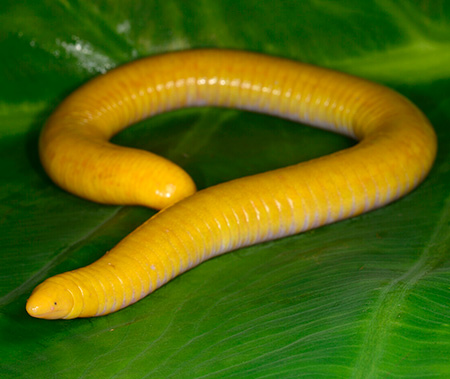
(Schistometopum thomense)
São Tomé Caecilian
Черв'яга жовта
It is found in most soils on São Tomé Island (Gulf of Guinea, West Africa), from tropical moist lowland forests to coastal coconut plantations. It is absent only from the driest northern areas of the island.
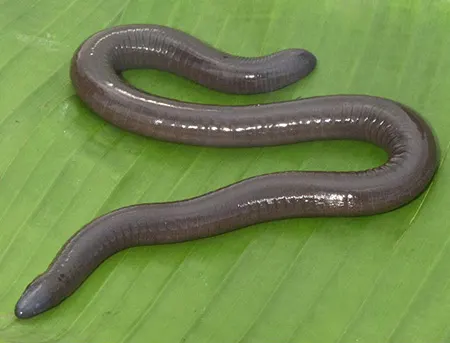
(Schistometopum gregorii)
Flood-Plain-Dwelling Caecilian
Черв'яга Ґреґорі
It is endemic to the coastal East Africa in Kenya and Tanzania; it is known from the Tana River Delta area in Kenya (its type locality) and between Bagamoyo and Rufiji River in Tanzania.
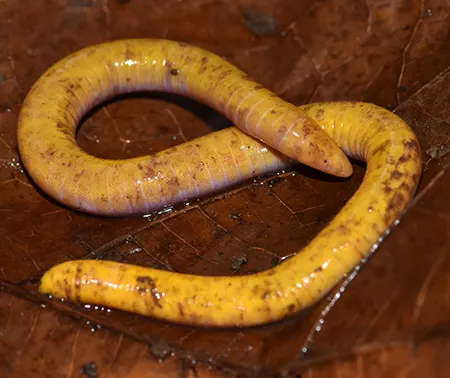
(Schistometopum ephele)
Aqua Ize Caecilian
It is endemic to São Tomé, off the west coast of Central Africa in the Gulf of Guinea.
